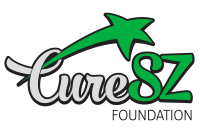Sintomas negativos da esquizofrenia

Por Henry A. Nasrallah, MD
Vice-presidente executivo e diretor científico, The CURESZ Foundation
Schizophrenia is a complex neuropsychiatric syndrome with multiple symptom domains. The most recognizable symptom cluster is psychosis (classically, hallucinations and delusions) which is the reason many patients are initially hospitalized. However, most patients with schizophrenia also suffer from three other symptom clusters including negative symptoms (deficits in normal brain function such as lack of motivation and interest that impair social and vocational functioning), cognitive impairments and mood symptoms. In fact, the negative and cognitive symptoms are what causes functional disability, even after the psychotic symptoms subside with antipsychotic medications.
Negative symptoms were not widely recognized until the 1980’s. Prior to that, the focus in schizophrenia was on the psychotic symptoms (hallucinations and delusions). The persistence of negative symptoms after the psychosis is controlled led to many studies that characterized the various negative symptoms.
A seguir estão os sintomas negativos da esquizofrenia, que geralmente são observados pela família ou pelo psiquiatra, e não pelos próprios pacientes:
1. AFFECT PATHOLOGY This refers to a flat, blunted or restricted facial expression. In addition, other manifestations include poor eye contact, decreased spontaneous movements, monotone speech (referred to as aprosody), and failure to recognize the facial expression of other people (such as neutral, angry, sad, disgusted or anxious).
2. ALOGIA Which is a reduction in the quantity of thought, and poverty of speech, including speaking in monosyllables rather than sentences. Sometimes, patients may suddenly stop speaking in mid-sentence (called “blocking”) which is an interruption of thought. There is often a prolonged pause before responding to a question.
3. ASSOCIALIDADE Qual é a ausência ou diminuição do interesse em ter relações sociais ou interagir com outras pessoas. Os pacientes também são incapazes de sentir intimidade ou proximidade com os outros.
4. AVOLIÇÃO E APATIA Que é a perda da capacidade de iniciar ou persistir em uma atividade dirigida a um objetivo. Isso inclui não tomar banho, se arrumar mal e não fazer nada o dia todo, muitas vezes interpretado como “preguiça”.
5. ANHEDONIA Which is the loss or reduction of the capacity to experience pleasure, manifested by lack of interest in enjoyable activities. This is also a decrease in sexual activity, interest or enjoyment. Unlike the anhedonia of depression, it is not reversible in most patients.
6. DESATENÇÃO Que é a incapacidade de manter uma tarefa ou envolvimento/engajamento por um período de tempo razoável. O paciente parece absorto em um mundo interno, excluindo tarefas externas.
7. ANOSOGNOSIA Also referred to as non-awareness of illness. The patient lacks insight into their illness or disability. It can also be regarded as a cognitive deficit. This lack of insight prevents patients from seeking treatment or help to alleviate symptoms or to solve personal problems. Anosognosia can be reversible with continuous adherence to antipsychotic therapy.
Researchers sometimes classify the above negative symptoms into two major subdivisions:
1. Expressão diminuída, que inclui achatamento afetivo e alogia, e
2. Apatia/avolição, que inclui falta de motivação e associalidade.
In contrast to “positive” psychotic symptoms for which dozens of medications are available, there are no treatments yet for negative symptoms. It is a huge unmet need in the field of schizophrenia. So far, many attempts have been futile in developing a pharmacological treatment for negative symptoms. Thus, psychotherapy is the main approach to help patients recognize and overcome their negative symptoms. Occupational and recreational therapies can also be helpful. There are a couple of promising medications on the horizon. However, the FDA has not approved any of these yet.

